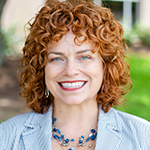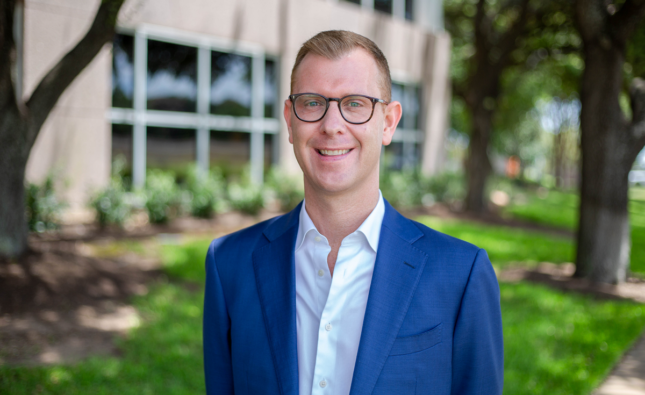 by Teri Clement, Director of School Transformation, E3 Alliance
by Teri Clement, Director of School Transformation, E3 Alliance
As we move to recovery, Teri points out key strategies in accelerating change in light of the opportunities the pandemic revealed to educators. For us in Central Texas, moving forward together allows us to collectively impact the region.
Yes, the COVID-19 pandemic presented increased stressors, anxiety-inducing uncertainties, and complex dilemmas for our schools. There will be more pain points ahead, no doubt. There is also an opportunity to recognize some unexpected but welcome gains that, if properly leveraged, could catapult our schools over some long-standing barriers and into a new era of innovation and progress.
Opportunities for positive change might be a puzzling, unorthodox way to describe our experiences this year, but the reality is that’s what happened to us in the education world. By digging into the complex dilemmas we were forced to overcome, educators recognized some surprising benefits. Training and coaching many school leaders over the past 15 months has given us key insights at E3 Alliance into these profound silver linings. We know that the likelihood for more struggle is great as we look ahead and begin planning for the 2021-22 school year. But the way to catapult our schools over some deep rooted impediments and embrace innovation and progress is to make sure we’ve identified those advancements and expand upon them with deliberateness and integrity.
1. Student Well-Being Comes First, Finally
For approximately 30 years, the field of educational research has been supplying a bevy of evidence supporting a ‘whole-child’ approach, alongside academic learning that includes relationship building and healthy lifestyle coaching, while ensuring physical and emotional safety and providing social-emotional discovery. Although these are widely recognized as shared values, schools implementing them with fidelity prior to the pandemic were few and far between. This reality was challenged when schools closed in March 2020, and students were no longer in our buildings. It didn’t take long before most of us were asking the same question, “are they okay?”
It was inspiring to see educators everywhere quickly prioritize the fundamental needs of students: food, shelter, physical, emotional and mental health. In the months that followed, school leaders and classroom teachers looked ahead to plan for the 2020-21 school year with an unparalleled focus on these mission-critical areas – wellness checks, relationship-building opportunities, connectedness with students and families and social-emotional learning. Let’s keep it going by prioritizing relationship building and social-emotional learning in our strategic plan for 2021-22. Securing time in the master schedule for personal connections, integrating high-quality curriculum for social-emotional learning, and supporting these practices with professional learning for teachers are just a few ways to support student well-being like never before.
2. Reasonable and Realistic Curriculum Discussions Have Begun
It has been nearly 20 years since the well-respected edu-researcher, Robert Marzano, boldly stated that the curriculum standards in practice were too numerous and needed to be cut by two-thirds. Although it would be hard to find anyone to refute his recommendation, it is certain that little to no work has been done in this direction to date.
Let’s look at what the pandemic did for us here. With only two months left in the 2019-20 school year, many were quick to pare down the remaining curricular demands of the school year to only the most essential standards. What? We are not going to teach everything? This was a welcome disruption to our previous norm of “must. teach. all.” We know what to do! Implement systems for campus administrators, other instructional leaders, and classroom teachers to collaborate on selecting ONLY the most essential standards to focus on. When pressed, we went to this practice without hesitation. Let’s keep this going by adjusting our collaborative practices in the next school year to include a process for narrowing the focus to only the most critical standards and supporting student learning with accelerated learning plans that will help students master the standards at their current, enrolled grade level.
3. Assessment Practices MUST Evolve, Period
The pandemic paused most standardized assessments in the Spring of 2020; this is true. There was a collective sigh of relief but also a wondering of how we would proceed without them. When planning for reopening began, we had to reimagine how to assess student progress. We could no longer give formal assessments in the same way. An interruption to our previous practice of systematic cycles of formal assessment as the primary approach to evaluate progress and provide feedback has provided a welcome discussion of alternative approaches to designing ways for students to demonstrate mastery.
Assessment must also transform into a more meaningful opportunity for feedback, strengthening connectedness and relationships. We have more understanding than ever about how beneficial frequent, formative assessment can be a catalyst for building both confidence and competence in our students, fostering a growth mindset that will benefit them in school and beyond. Although there is not a one-size-fits-all answer for this one, we can consider leveraging the momentum of this potentially-beneficial disruption to transform practices. While we can leverage standardized assessments to compare student growth to students across the state, campus and classroom-based practices can be elevated with student self-monitoring, feedback conferences, opportunities for peer evaluation and self-assessment rubrics, to name a few.
4. The Classroom Door is Open
The integration and implementation of technology, 21st century skills and evidence-based instructional practices have long been the primary focus for many schools and classrooms. This work is ongoing and gradual, typically. But the dramatic and speedy leap forward in response to the pandemic was a shift. As the well-known proverb states, when the need for something becomes imperative, you are forced to find ways of getting or achieving it.
Legions of teachers, seemingly overnight, cast aside fears and began using learning management systems and virtual communication tools and collaborating with leaders and colleagues like never before, bringing their work beyond the classroom and into a shared space. They were humble, vulnerable, inspiring, and strong. It demonstrated the resilience and capacity of educators. We can leverage this momentum as our minds, and classroom doors, are open to new ways of doing things. Consider how a culture of feedback and open-mindedness can be further developed through practices such as peer observations and campus-wide strategy implementation so the entire professional learning community can help each other grow in the practice of a focused set of skills.
5. Spotlight on Educational Equity
Simply defined, educational equity means that all students get what they need to be successful. The pandemic made inequities that had long been disguised or muffled, visible and loud. Issues around connectivity, access to technology, and even how many families rely on public schools as a primary food source for their children, were all now a part of the shared, common consciousness. The disparities were shocking to some and needed learning for all. The opportunities to extend this spotlight to other areas of educational equity, such as culturally responsive teaching and school culture and climate, have not gone unnoticed. Many educational leaders across the nation have convened new task forces and initiated policy reform to take advantage of the spotlight. Keep the spotlight on equity strong by staying the course, continuing brave, deliberate dialogues, and ensuring that teaching, student support, and policies translate into practices forever changed for the better.
In many ways, the COVID-19 pandemic has worked as a leveler, causing disequilibrium in our work as educators and leaving us more than a little shaken. As we all gain our footing, let’s take advantage of the potential paradigm shift before us. The issues and practices discussed here were interrupted, disrupted, and tossed around, changing the way we look at them and compelling us to change our ways. We can honor the struggle by focusing on the resiliency demonstrated by both students and educators, planning for sustaining the positive changes, keeping the door open and the light on as we plan for and lead into the 2021-22 school year.
Working as a change agent for kids, Teri Clement’s passion for educational change led her to a variety of school leadership roles during her 10-year tenure in Texas public schools. She earned certification as a Principal before joining E3 Alliance. Her work at E3 focuses on partnering with school and district leaders to transform education systems through data and collaboration so ALL students succeed.
Click here to view a collection of free informative and practical videos, graphics and interactive tools that align to the solutions we provide to support your work as an educator.








